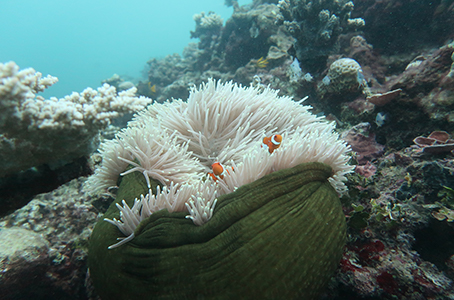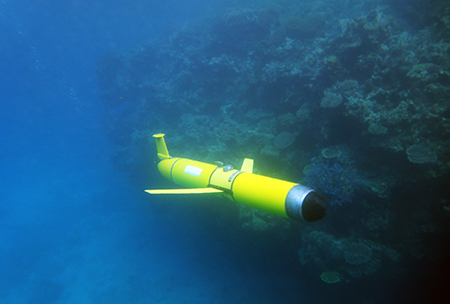In another “hit” to the Australian environment this Summer, the Great Barrier Reef experienced extensive and widespread coral bleaching. This mass bleaching follows the unprecedented and successive bleaching events of 2016 and 2017.
Satellite-derived sea surface temperature (SST) data and AIMS’ in-water weather stations signalled temperatures were increasing above the seasonal average in mid-January. Great Barrier Reef waters experienced a prolonged ‘marine heatwave’ in February, where temperatures across the region were 1-2.5°C above average throughout the month.
Preliminary results from aerial and in-water surveys from the ARC Centre of Excellence for Coral Reef Studies and GBRMPA at the end of March indicate widespread, variable bleaching across the World Heritage Area.
Visit the GBRMPA website for this summer’s reef health update collection.
In coming weeks, some corals will regain their symbiotic algae and recover, while others will perish. The level of mortality from this bleaching event will not be known for some time. AIMS routine long-term monitoring of the Great Barrier Reef will provide essential data to understand the end result of this event on reef health and will put this coral bleaching event into the long-term context of how the Reef is faring.
Autonomous gliders help scientists understand marine heatwaves
Understanding the characteristics of marine heatwaves helps predict the level of risk to coral reefs and assists with management and monitoring activities. AIMS oceanographers worked with the Integrated Marine Observing System (IMOS) Event Based Sampling sub-facility to deploy two ocean gliders during February and March in the central and southern Great Barrier Reef. The ocean gliders follow paths set by remote pilots, collecting data on a range of oceanographic parameters at multiple depths including temperature and light.
Data from both glider missions will be used to help describe how deep the warming extended from the surface with depth. It will also help us understand how the waters cooled following the tropical low which developed into ex-Tropical Cyclone Gretel.
Data from the two glider missions are available online via the AODN Portal or the IMOS Ocean gliders page.
Heat stress on Australia's west coast
Ocean temperatures have also been unseasonably high throughout much of Western Australia, from Rottnest Island in the south, to Ashmore Reef in the north, and far out to Christmas and Cocos Keeling Islands in the Indian Ocean. For most reefs, the heat stress hasn’t yet been sustained for several weeks, and therefore extensive coral bleaching was not expected.
Through summer, heat stress was highest in northwest Australia, particularly in the Kimberley region. This finally eased at the end of January with the late arrival of the monsoon and increased cloud cover, storms and cyclones.
However, ocean temperatures across parts of Western Australia increased again through March and April. Some patchy bleaching has been reported in parts of the Pilbara and Kimberley, and temperatures are expected to remain high through April. Local weather conditions will determine the cumulative heat stress through March and April and the extent of bleaching on northern reefs, and sub-tropical reefs such as those at the Houtman Abrolhos. The risk of bleaching will decrease with seasonal cooling through May, but temperatures are expected to remain above average in the northwest until August 2020.
This heat stress has occurred outside of the El Niño and La Nina conditions which typically bring the most extreme coral bleaching to Western Australian coral reefs, and reflect the ongoing increases in world’s ocean temperatures.
Innovative thinking to help the future of coral reefs
Climate change is altering coral reef disturbance and recovery cycles, providing less time to recover between disturbances. The future of Australia’s coral reefs depends on reducing carbon emissions and ongoing best-practice Reef management. The challenge is big and researchers are also developing a toolbox of interventions to help corals adapt and better cope with our changing climate. AIMS scientists lead world-class research in this effort to create solutions for Reef adaptation and restoration.
Learn more about AIMS research on coral bleaching and solutions: www.aims.gov.au/coral-bleaching



